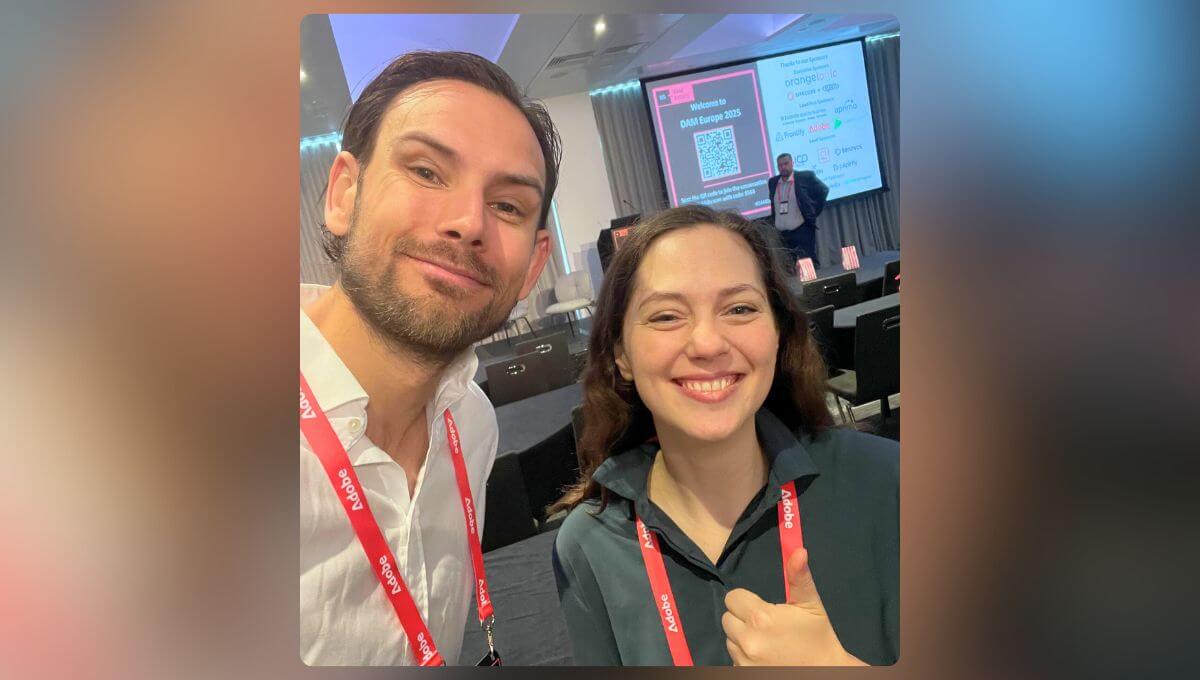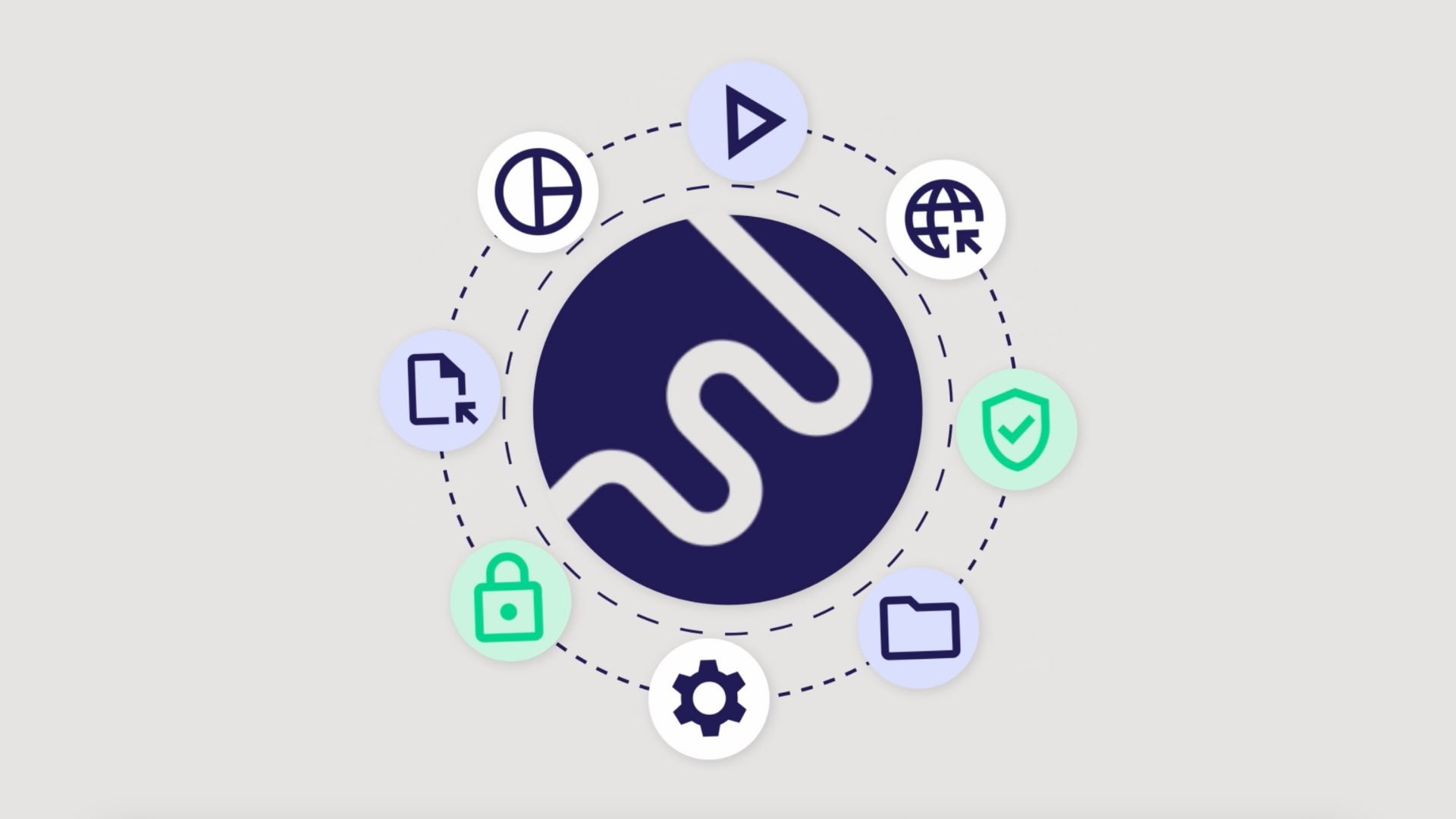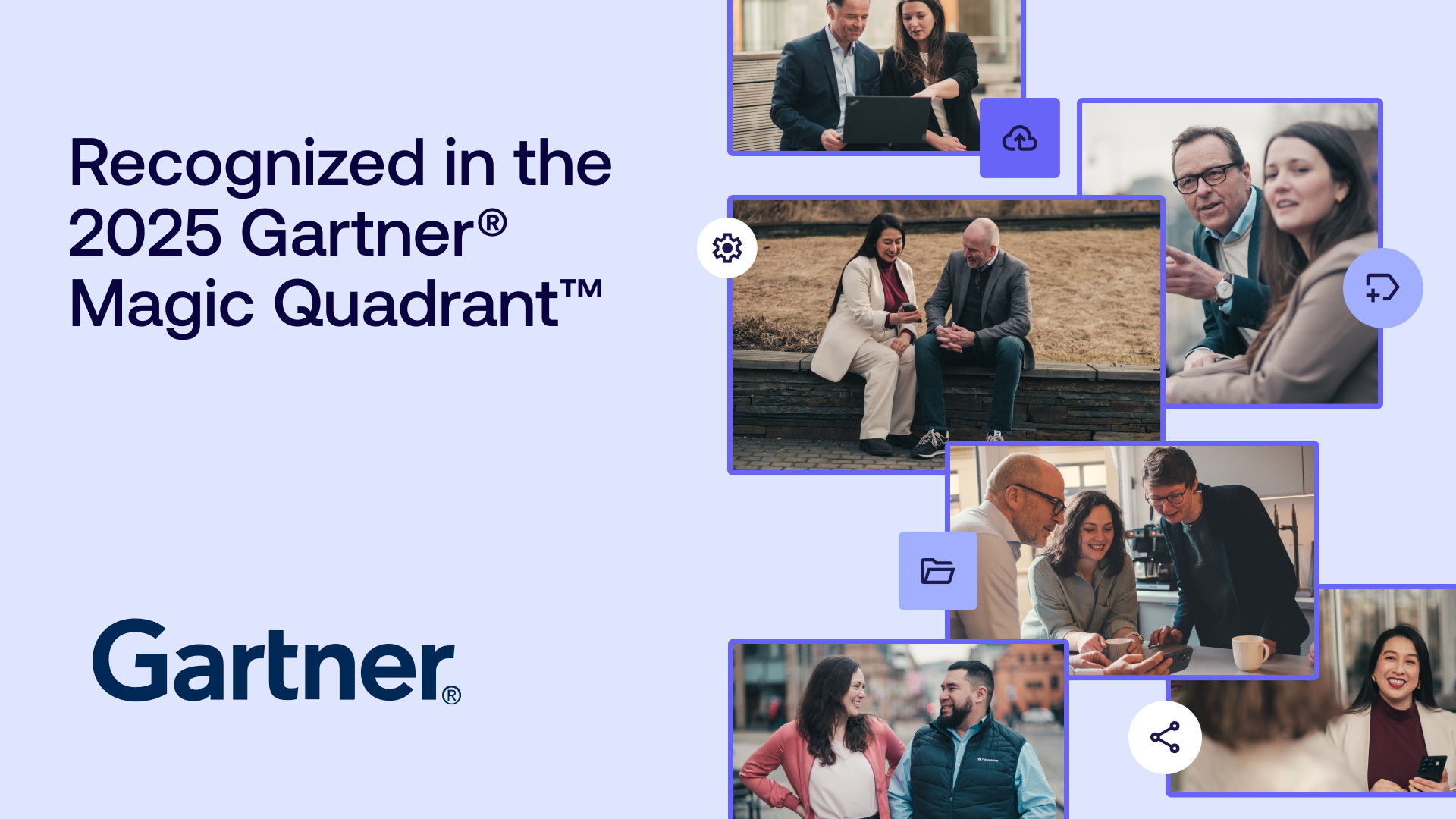
Andreas Bergman and Nina Metzger at DAM Europe 2025 by Henry Stewart.
A Digital Asset Management (DAM) system is no longer just a place to store files. A modern DAM is an essential part of your infrastructure – it connects, structures, and enables personalization throughout the entire content lifecycle.
We recently attended DAM Europe 2025 – one of the leading European conferences dedicated to Digital Asset Management. Hosted by Henry Stewart Events, the event brings together DAM experts from across industries once a year – from global brands to media organizations and public institutions – to exchange insights, discuss challenges, and learn from each other.
This year’s conference highlighted four key topics that are shaping the future of DAM:

1. Metadata, keywording & taxonomies – structure is everything
Metadata is the backbone of any DAM solution. It makes content findable, reusable, and customizable. But to make use of its full potential, metadata must be well-structured, thoughtfully applied, and consistently maintained.
This means taxonomies should reflect your organization’s logic – not just random keyword lists. Keywording should follow a clear system, ideally supported by smart tools like AI. Just as important is a solid governance structure: good metadata doesn’t happen by chance – it requires defined roles, clear metadata routines, and ongoing training.
In practice, the success of a DAM implementation depends not just on the technology – but on a clear, well-executed metadata strategy.

2. Integration instead of silos – DAM as part of the tech stack
A DAM can no longer live in isolation. It needs to integrate seamlessly into the wider ecosystem – from CMS to PIM, CRM, and industry-specific tools. The foundation for this is an API-first approach and headless architecture. This transforms DAM from a passive storage space into a powerful engine within your tech stack, creating real value through intelligent connections.
In well-integrated systems, content flows automatically to the relevant platforms, metadata is enriched dynamically, and systems learn from each other – for example through usage analytics or targeted, personalized asset delivery.
A modern DAM is not an endpoint – it’s a hub in your digital ecosystem. Our Fotoware Alto platform is built for exactly that, as an API-first DAM designed to meet these needs.

3. No DAM success without system ownership
A DAM system needs clear ownership. Without someone responsible for it, processes fall apart, users lose trust, and the system never reaches its full potential.
The DAM owner shouldn’t just be the go-to person for IT. They act as a bridge between marketing, editorial teams, other business units, end users – and even the DAM vendor.
Hands-on onboarding tailored to different roles is crucial, as are regular routines for metadata maintenance, role management, and system checks. Just as important are feedback loops that ensure the DAM continues to evolve in line with real user needs.
With user-friendly platforms like Fotoware Veloz, these processes can be implemented effectively – but it’s crucial that they’re well-coordinated and actively maintained.

4. A new perspective on AI – from hype to responsibility
Artificial Intelligence (AI) was a big topic at DAM Europe 2025, but the conversation is shifting: AI is no longer just about flashy features. The focus is now rather on thoughtful, sustainable integration of AI into existing workflows.
Reliability, transparency, and contextual relevance are now more important than show-stopping demos. Strong metadata remains the foundation for any AI-based features: without it, automation often creates more confusion than value.
AI is increasingly seen as a supporting tool, not a replacement for human decisions. That’s especially true for tasks like classifying, selecting, and organizing content. At the same time, ethical and organizational questions are becoming more prominent: How do we handle AI-generated metadata? Who’s responsible? And how do we keep the process transparent?
Read more: Content verification - A project for photo authenticity in journalism
The perspective on AI is evolving – toward a responsible, conscious use that creates real, lasting value.
Conclusion
A great DAM system doesn’t rely on technology alone. It needs structured metadata, a clear taxonomy, and strong governance. It must integrate seamlessly with existing systems rather than operating in isolation. It needs people who take ownership and actively shape its use, as well as a mindful, strategic approach to AI.
Only then does DAM become more than a digital archive – it becomes a future-ready tool for efficient, personalized, and connected content workflows that will make your work easier.

.png)
